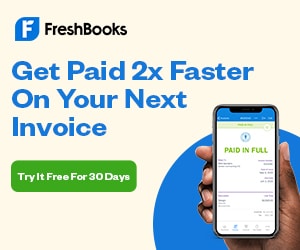High-value clients can change the trajectory of a freelance business. They bring bigger budgets, more interesting projects, and opportunities that lead to lasting relationships. Yet many freelancers wait for referrals or organic leads that arrive slowly, leaving their income unpredictable. Paid ads can shift that dynamic.
When used strategically, even a small ad spend can put your work in front of the right people at the right time. Instead of hoping for the perfect client to stumble across your portfolio, you can actively place it where decision-makers are looking. This turns outreach into a deliberate, measurable process that drives growth.
Why Freelancers Should Consider Paid Ads
Referrals and organic marketing can deliver results, but they often take time to build momentum. A single referral might lead to a great project, yet weeks can pass before another arrives. Search rankings or social media growth can fluctuate, leaving your pipeline uncertain.
Paid ads give you the power to control how and when potential clients see your work, making your outreach more predictable. With paid ads, you choose exactly who to target, how much to spend, and when to run your campaigns. It helps you target clients that fit your skills, budget, and preferred projects.
Money Note: If an extra $1K–$5K/month would change your 2026 goals (debt, savings, travel, freedom), you’ll want to catch this: free live workshop from a freelancer who’s earned $4M+ online. No fluff. No gimmicks. A real roadmap. 👉 Watch the training or save your seat here »
By placing your services in front of qualified prospects at the right moment, you can reduce downtime between projects and build a steady stream of lucrative opportunities.
Understanding Performance-Driven Results
Successful paid advertising depends on more than placing an ad and hoping it works. A performance-driven strategy focuses on clear goals, measurable outcomes, and constant refinement. Every campaign should start with a specific objective, such as increasing inquiries or booking a set number of projects per month. By tracking how many clicks, form submissions, or calls come from your ads, you gain visibility into which messages resonate and which miss the mark.
Creative freelancers can apply the same principles found in performance-driven eCommerce PPC campaigns, even if they are promoting services instead of products. Your portfolio or service page becomes the “storefront,” and its job is to convert visitors into leads. Small changes—like refining headlines, adjusting visuals, or reworking calls to action—can have a big impact on conversions. Testing these elements over time reveals which combinations drive the most interest from high-value clients.
Data-driven decision-making ensures you invest in what works rather than spread resources thin. If a particular ad, audience segment, or creative format outperforms the rest, direct more of your budget toward it. Likewise, scale back on underperforming areas to reduce waste.
Identifying Your High-Value Client and Crafting Messaging
Before spending a cent on ads, you need a clear picture of who your high-value client is. This goes beyond knowing their industry. Consider their budget range, the scale of projects they commission, and how frequently they hire. Think about their goals, challenges, and the qualities they value in a freelancer.
Once you know who you want to reach, your messaging must speak directly to them. High-value clients respond to content that reflects their needs and positions you as a solution provider. If you work with tech startups, highlight speed, scalability, and innovative thinking. If your focus is on luxury brands, lead with quality, detail, and exclusivity. Use language that mirrors their priorities and visuals that align with their aesthetic.
Choosing the Right Paid Channels on a Budget
The right ad platform can determine how quickly you connect with high-value clients. If your goal is to reach people actively searching for your services, Google Ads can be highly effective. LinkedIn offers precise targeting for industries, job titles, and company sizes, making it ideal for B2B-focused freelancers. Facebook and Instagram can help showcase creative work visually, reaching audiences based on interests, behaviors, and demographics.
Working with a small budget means being selective. Start with one or two platforms where your ideal clients are most active. Narrow your targeting by location, industry, and interests to ensure your spend reaches the right audience. Use ad scheduling to show your ads at peak times and adjust bidding strategies to control costs. By testing small campaigns before scaling, you can focus resources on channels that produce measurable results without overspending.
Setting Up Campaigns and Tracking Conversions
A paid ad campaign begins with a clear objective. For freelancers seeking high-value clients, that objective is often lead generation. Choose a campaign type that directs prospects to a landing page, portfolio, or booking form. Keep the destination page focused, with a clear call to action that encourages inquiries. Remove distractions so visitors know exactly what step to take next.
Tracking is essential for understanding what works. Install a pixel or tracking code from your chosen ad platform to capture data on clicks, sign-ups, and form submissions. Set up conversion events that reflect your goals, such as scheduling a consultation or requesting a quote. Review these metrics regularly to see where your budget delivers the highest returns.
Optimizing and Scaling Based on Data
The first weeks of a campaign often reveal patterns that shape future success. Look closely at metrics such as click-through rate, conversion rate, and cost per lead. These numbers highlight which ads capture attention and which ones fail to convert. Use this insight to refine headlines, ad copy, and visuals so they better match what your audience responds to.
A/B testing is one of the most effective ways to optimize. Create two ads that run at the same time, but differ in only one element—such as the image, headline, or call to action. This makes it easier to identify what drives results. Continue testing over time so your ads stay fresh and relevant to high-value prospects.
When an ad consistently delivers strong results, it is ready to scale. Increase your budget gradually to maintain performance while reaching more qualified leads. Expand targeting to similar audiences or replicate successful campaigns on other platforms.
Wrapping Up
Start small, test carefully, and let the data guide your next moves. With a focused and performance-driven strategy, even modest budgets can produce consistent, high-value leads. The sooner you begin, the faster you can build a steady flow of work that supports your income and growth goals.

Keep the conversation going...
Over 10,000 of us are having daily conversations over in our free Facebook group and we'd love to see you there. Join us!


